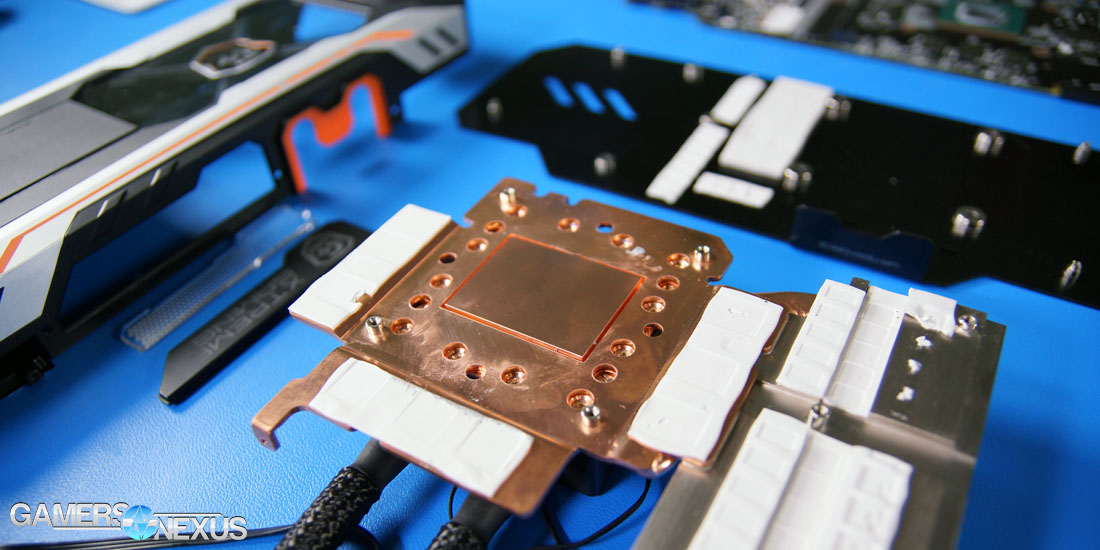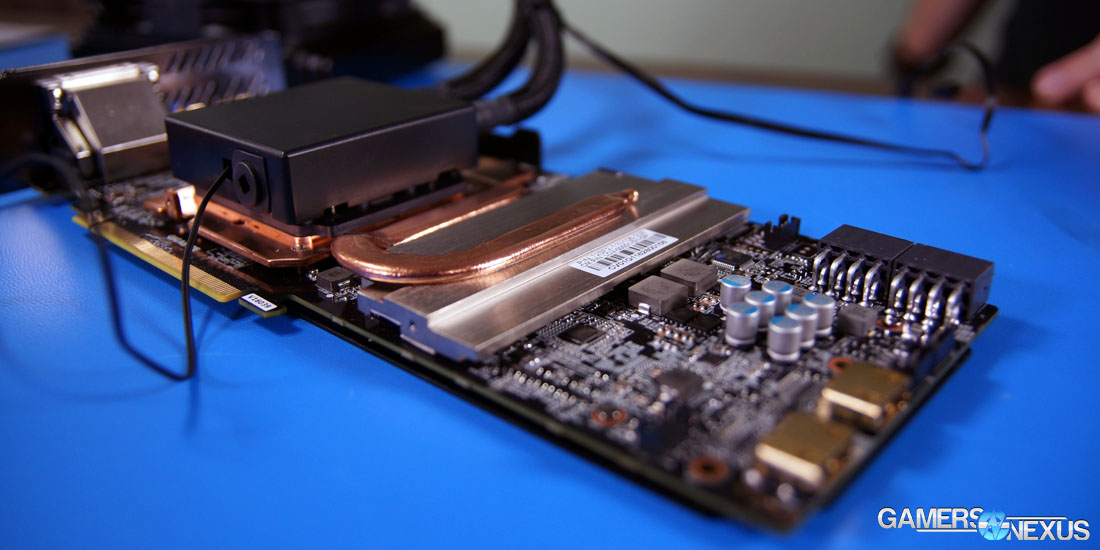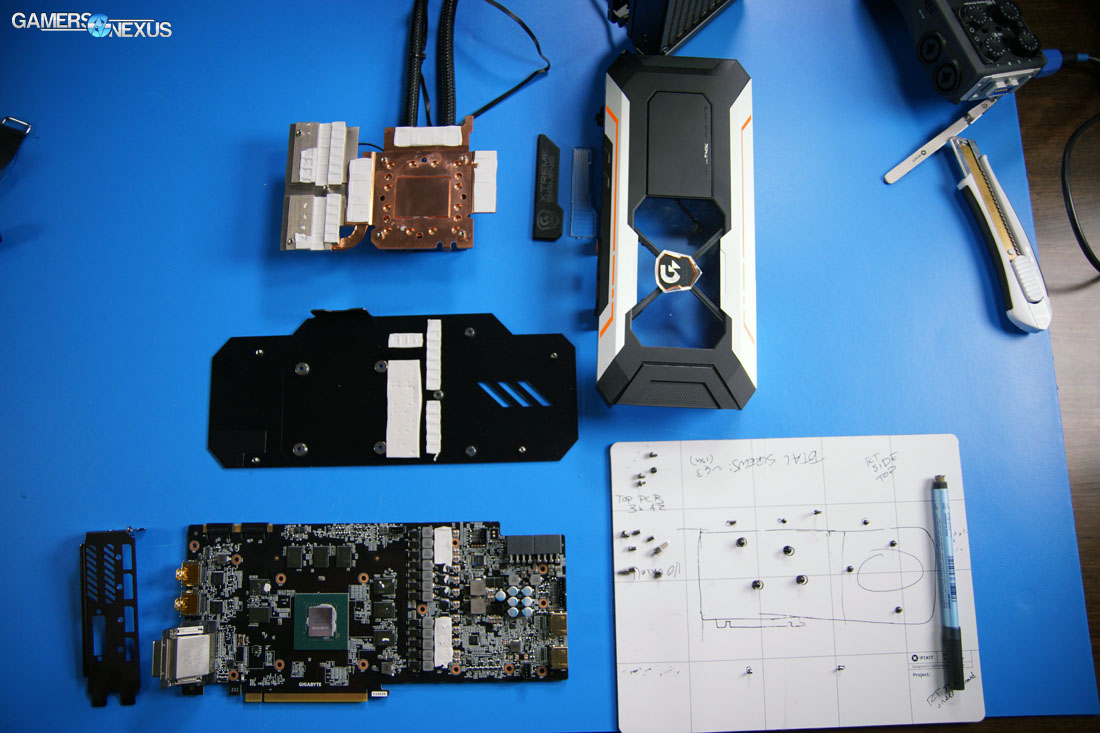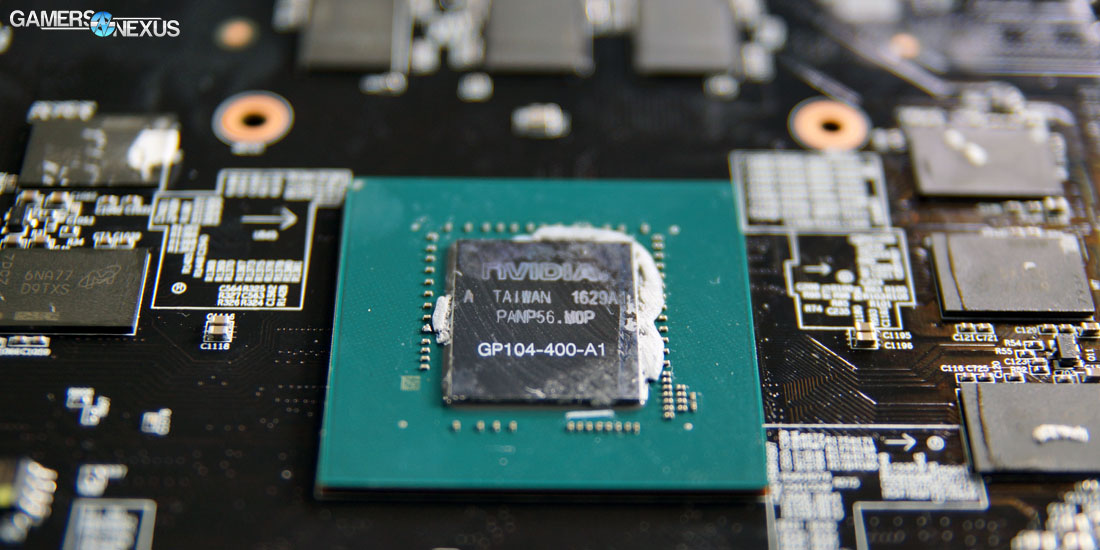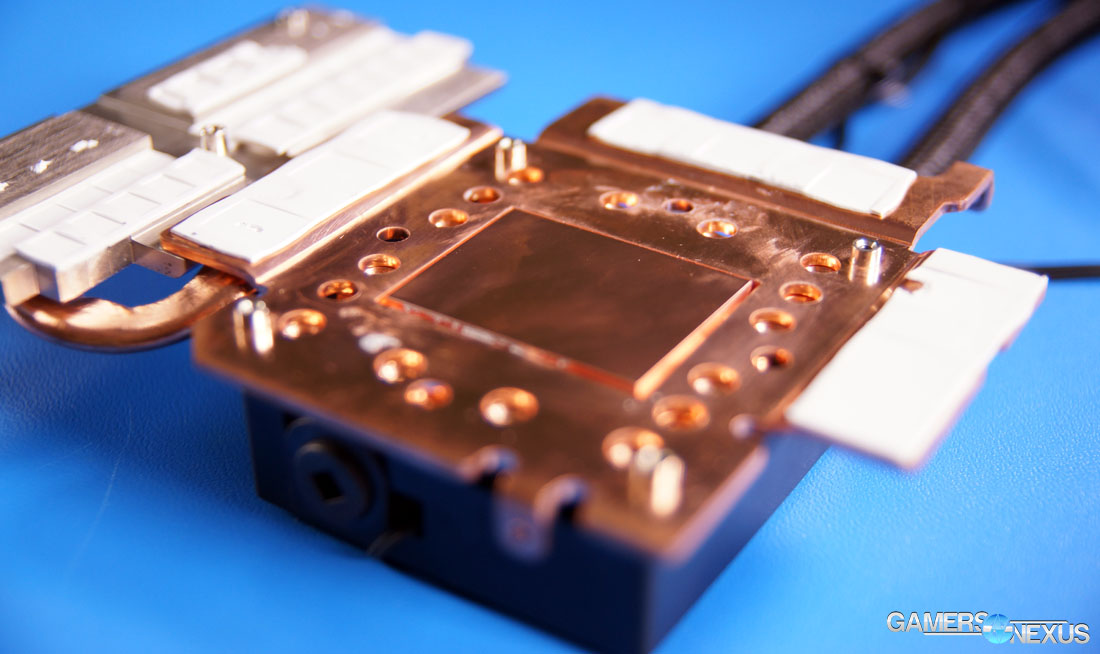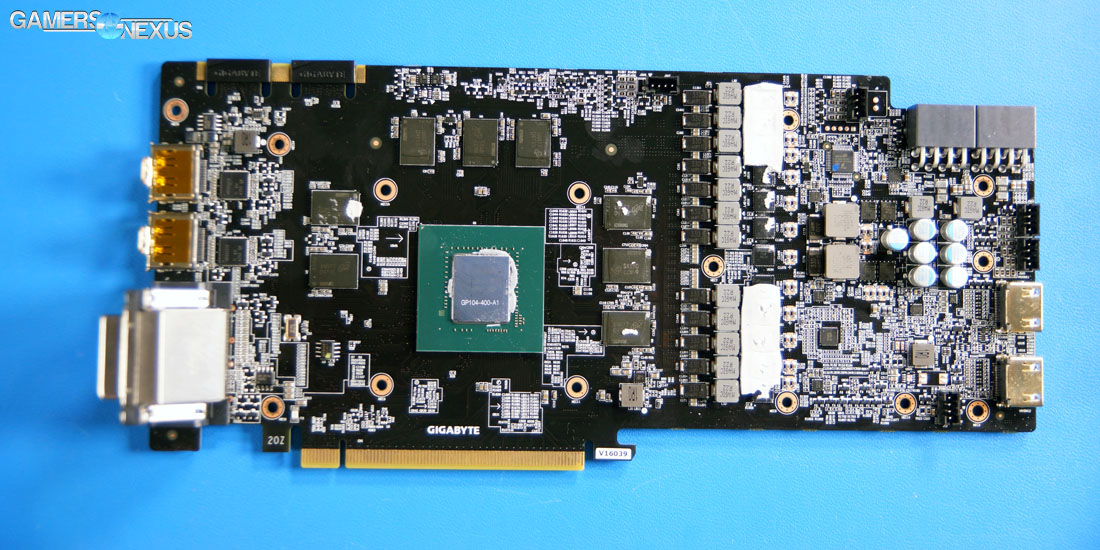As we board planes for our impending trip to Southern California (office tours upcoming), we've just finalized the Gigabyte GTX 1080 Xtreme Water Force tear-down coverage. The Gigabyte GTX 1080 Xtreme Water Force makes use of a similar cooling philosophy as the EVGA GTX 1080 FTW Hybrid, which we recently tore-down and reviewed vs. the Corsair Hydro GFX.
Gigabyte's using a closed-loop liquid cooler to deal with the heat generation on the GP104-400 GPU, but isn't taking the “hybrid” approach that its competitors have taken. There's no VRM/VRAM blower fan for this unit; instead, the power and memory components are cooled by an additional copper and aluminum heatsink, which are bridged by a heatpipe. That copper plate (mounted atop the VRAM) transfers its heat to the coldplate of what we believe to be a Cooler Master CLC, which then sinks everything for dissipation by the 120mm radiator.
Here's our tear-down video. More info in text below, though the tear-down process and components are also shown in the video.
The Cooler Master CLC uses a different design than what we commonly find, seeing as both EVGA and Corsair/MSI use Asetek-designed coolers. CM's pump block is larger, uses a wide copper plate that connects directly with the VRAM plate (custom design), and then uses a protruded and isolated copper coldplate for direct GPU cooling. Isolating the protrusion assists in lowering GPU temperatures measured by the diode. This is a challenge that EVGA faced with its VRAM cooling plate, as the shared usage of a CLC will increase the measured GPU diode temperature due to saturation of the cooling solution.
We believe the barb closest to the right-side VRAM is the out valve, as this would be the hottest location on the solution (closest to VRAM & VRM). The VRM is sinked by a copper plate and thermal pads, including the inductors, and transfers its heat to a small copper heatpipe. That heatpipe connects to the right-side VRAM plate, which connects to the CLC coldplate directly.
After testing – which will soon be published in the review – we believe that the Cooler Master block is running a higher RPM pump and may be doing some strategic liquid routing to improve GPU temperatures. Unfortunately, because this card is loaned by a reader/viewer (thanks, Sean), we can't take apart the Cooler Master CLC for further analysis.
GTX 1080 Xtreme Water Force PCB photos are enclosed as well, but we'll forge ahead with a separate PCB analysis for more on that.
More content on this card in the coming days.
Editorial: Steve “Lelldorianx” Burke
Video: Andrew “ColossalCake” Coleman
